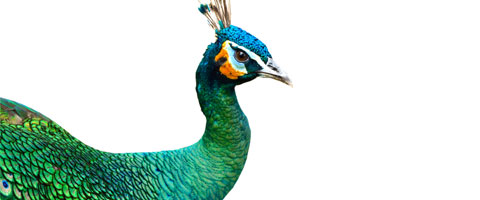New Study Says A Breed Of Dinosaur Attracted Mates With Tail Feathers

The age of dinosaurs was filled with different varieties and types of life over the years. Now, a recent study has shown an unusual set of flightless dinosaurs may have used feathers located on their strong, muscular tails to attract members of the opposite sex.
A group of scientists at the University of Alberta in Canada recently researched the dinosaurs, and are set to publish their findings in an issue of the journal Acta Palaeontologica Polonica. During an expedition in the Gobi Desert in Mongolia, the scientists encountered some 75-million-year-old fossils of oviraptors, a flightless, vegetarian, feather-covered dinosaur that walked on two feet. Finding the oviraptors uncovered an unusual trait—two vertebrate blending together creating one strong, muscle-covered tail structure. Called a pygostyle in today's world, this trait is found in some of today’s birds. But how do we know about the feathers and the dinosaur’s tendencies when attracting mates?
Most birds use the pygostyle to help them to fly swiftly and smoothly, but the oviraptors were weird little flightless guys. According to Live Science, the Canadian scientists don’t believe the bone, muscle, and feathered tail was used for balance, as similar flightless birds in today’s world don’t use the pygostyle in that manner. Here’s where it gets interesting, however. In today’s world, peacocks and turkeys use their pygostyles with flair to help them to seem more attractive to females. Thus, the scientists hypothesize that the oviraptor tail was used in the same manner. Even 75 million years ago, the dudes were strutting their stuff for the females.
What might help to add evidence to the oviraptor mating mystery is whether male members of the species have a larger tale than the females. Right now, it’s been tough for scientist to encounter the very tip of the bone, which would unwind that particular mystery, but hey, in the world of science, there is always hope for new discovery.
You can read the entire study on the Acta Paleontologica Polonica site.
Photo Credit @Shutterstock/ Panda 3800
CINEMABLEND NEWSLETTER
Your Daily Blend of Entertainment News

Jessica Rawden is Managing Editor at CinemaBlend. She’s been kicking out news stories since 2007 and joined the full-time staff in 2014. She oversees news content, hiring and training for the site, and her areas of expertise include theme parks, rom-coms, Hallmark (particularly Christmas movie season), reality TV, celebrity interviews and primetime. She loves a good animated movie. Jessica has a Masters in Library Science degree from Indiana University, and used to be found behind a reference desk most definitely not shushing people. She now uses those skills in researching and tracking down information in very different ways.

The WWE's Women's Royal Rumble Just Crowned Its Champion, But I'm More Psyched About The Major WrestleMania 41 Feud It Set Up

‘Leave That Man The F--- Alone’: After Scottie Pippen Claimed Neither Michael Jordan Nor LeBron James Is The Basketball GOAT, Carmelo Anthony Shared Thoughts

I Didn't See Elsbeth's Meghan Markle Joke Coming, But There's A Whole Story Behind Why It Makes Sense
Most Popular







